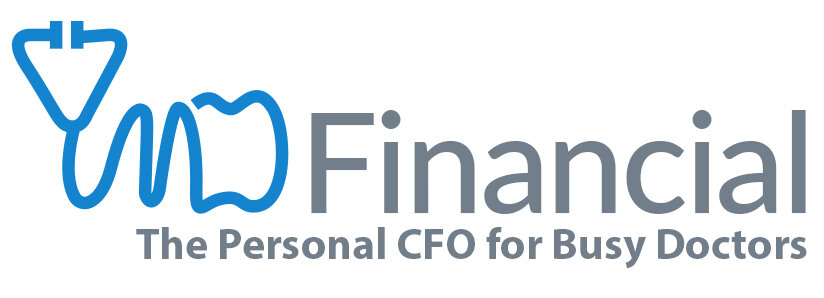Written by Josh Lantz, CRPC®/ Chief Investment Officer, Financial Advisor
During the summer of 2024 stock markets were in the news. The Standard and Poor’s 500 (S&P 500) fell about 6% between July 31st and August 5th of this year. The news media was quick to panic—they always do.
This quick drop in markets was followed by a recovery leaving the S&P 500 up for the year (as of writing this article in mid-October 2024). Therefore, if you stayed invested this year, as of now, you’ve probably still made money.
Markets drop. It’s very common. Sometimes a lot. Think of markets as two steps forward, one step back, then two steps forward. Over long periods they have rewarded investors, even though at times they’re very scary.
It’s a good reminder that markets are not for the faint of heart. When I think about the long-term history of markets, I think a lot of doctors would be surprised to learn a few things. Below are a few key concepts to think about while you invest.
Markets Drop
By looking at longer investment history, you can see how much stock markets can drop over time. Many doctors can remember time periods like February and March of 2020 when the pandemic started and markets dropped rapidly, but then recovered within four months.
Graph shows daily returns of SPDR S&P 500 ETF (SPY) in 2020 representing S&P 500 Index. The ETF is not identical to the index. SPY has internal expenses of 0.095%. SPY is a fair proxy for the movements in the S&P 500 index. This is not an investment recommendation. We suggest a more diversified portfolio.
Given the market in March of 2020 recovered so quickly the drop in the market wasn’t as noticeable as other periods.
Below is the S&P 500 during the 2008 crisis. Notice how the S&P 500 dropped about 56.2% during that period from its peak in October 2007 to the trough in March 2009. This is a large historical drop!
Graph shows daily returns of SPDR S&P 500 ETF (SPY) in 2020 representing S&P 500 Index. The ETF is not identical to the index. SPY has internal expenses of 0.095%. SPY is a fair proxy for the movements in the S&P 500 index. This is not an investment recommendation. We suggest a more diversified portfolio.
This is important because many doctors pick an investment strategy with a greater percentage of stocks in their portfolio, without understanding what can happen to stocks during crisis periods.
The below graph is the S&P 500 during the Great Depression (1929-1939) represented by a growth of $1 of the S&P 500 index. Notice how $1 dollar in the S&P 500 became worth around $0.20 by 1932 and eventually worth $0.85 by the end of the Great Depression in 1939. This drop of nearly 80% might be too painful for some doctors causing them to make a change when markets are down. The worst mistake any investor can make is turning paper losses to real losses by selling when the market is down.
Graph shows growth of $1 from 1/1/1929 to 1/31/1939 of the S&P 500 index. This is not an investment recommendation. We suggest a more diversified portfolio. By the end of the period $1 was worth $0.85 dollars losing money over the period.
For doctors who are uncomfortable holding onto their investments during these large market drops, they might want to consider lower risk strategies. The best time to make those adjustments are when markets are still at relative highs.
Often doctors pick Target Date Funds (TDFs) without realizing they might be investing in 90% stocks and 10% bonds, which may be too risky for their personal situation. Others are told they are supposed to invest in mostly stocks based on advice from gurus on social media who are unaware of longer-term market history. While a higher percentage of stocks for younger investors could be a good fit, the risks and rewards need to be properly weighed.
Length of downturns matter
While the amount your portfolio drops during a market crisis may be incredibly painful, sometimes what causes investors to sell when markets fall, is the length of time before a recovery.
Below is a more modern example. This graph is a growth of $1 in the S&P 500 during the Lost Decade. This is the period from 2000 to 2010. Notice someone who only invested in the S&P 500 during this period lost money. Their $1.00 became as low as $0.88 from the start to the end of this period. However, the worst part is that it took them over ten years to recover.
Graph shows growth of $1 from 1/1/2000 to 1/31/2010 of the S&P 500 index. This is not an investment recommendation. We suggest a more diversified portfolio. By the end of the period $1 was worth $0.88 dollars losing money over the period.
The money we manage for doctors at MD Financial is more diversified than solely the S&P 500. We don’t invest 100% in the S&P 500 alone. However, we’ve met many doctors who do invest 100% in the S&P 500 as their only investment.
Put yourself in their shoes for a second. Imagine you invest in 2000 and after the first three years your $1.00 is worth about $0.60. Then a few more years go by, you get a nice recovery, only to experience a market crash in 2008. You keep waiting. You are hoping for the market recovery. Your trust in the system begins to deteriorate. Eventually your trust turns to doubt, and it results in selling while the market is down.
This investor sells not because of the initial blow, but the sheer exhaustion of the investment journey. It’s too long a period to wait until recovery.
Here’s another great example. Look at this uneasy graph below. This is the growth of $1.00 in the S&P 500 during the Great Depression up until 1943. If you thought the Lost Decade was bad, the Great Depression up to almost the end of WWII was even worse. It took almost 15 years for full recovery.
Graph shows growth of $1 from 1/1/1929 to 1/31/1943 of the S&P 500 index. This is not an investment recommendation. We suggest a more diversified portfolio. By the end of the period $1 was worth $0.94 dollars losing money over the period.
And keep in mind, while the Great Depression took a long time for the United States S&P 500 to recover, it’s nothing compared to other countries around the globe. Below is an example of Japan. The Japanese stock market did incredibly well during the 1980s. It was the hot investment back in the day. It became a bubble, and it popped, taking a whopping 25 years to recover. Imagine investing for 25 years without making money.
Graph shows growth of $1 from 1/1/1990 to 1/31/2015 of the Fama/French Japan Index. This is not an investment recommendation. We suggest a more diversified portfolio. By the end of the period $1 was worth $1.01 dollars.
Solutions
I’m not sharing this information to scare you. I’m sharing it so you have a wider view of market history to make sure you’re comfortable with the risks.
Remember, the reason you are being rewarded for investing is because you are taking on investment risk. It wouldn’t be a risk if it wasn’t scary.
There are a few things you can do to help you sleep better at night:
First, make sure to diversify to include stocks from all over the globe---not just the United States. Often doctors who invest on their own will mostly invest in the United States with limited (if any) global diversification. History shows us that it’s helpful to diversify internationally. The more diversified you are, the better.
Diversification includes holding assets that behave differently from one another. Ideally, you want some assets that may be up, or flat when others are down. That can help stabilize a portfolio and shorten the time to recovery.
Second, make sure you can tolerate market drops based on the risk level of your portfolio. Ask your advisor what your portfolio might have done over various periods in time. You might discover that the potential drops are too much for you. You may decide to switch to a lower-risk portfolio where you can tolerate the ups and downs.
It does no good to be in a very aggressive portfolio (e.g. 90% or 100% stocks) if you cannot hold on for the ride when there’s a market crisis. If you sell to cash during a market crisis you will potentially lock-in losses.
Third, keep in mind it’s not just about how much markets can fall, it’s also about how long it takes to recover. Envision yourself in a situation where you must wait many years until recovery. Are you the type of person that can wait and trust the process? Or maybe you’re in a position in your career where you’re approaching retirement, and you should be taking less risk.
Markets are not for the faint of heart, but, as long as you think through these risks above, long term investing can be very rewarding.
Josh Lantz, CRPC®/ Chief Investment Officer, Financial Advisor With over a decade of financial planning experience, Josh has worked on more than 500 doctors’ financial plans. “It’s very hard to find a doctor’s situation I haven’t seen before,” says Josh. This is only a snapshot of the expertise Josh brings to MD Financial. He can be reached at Josh@mdfinancialadvisors.com.
The views expressed are those of the author as of the date noted, are subject to change based on market and other various conditions. Material discussed is meant to provide general information and it is not to be construed as specific investment, tax, or legal advice. Keep in mind that current and historical facts may not be indicative of future results. The information contained in our presentations has been compiled from third-party sources and is believed to be reliable; however, accuracy is not guaranteed.







